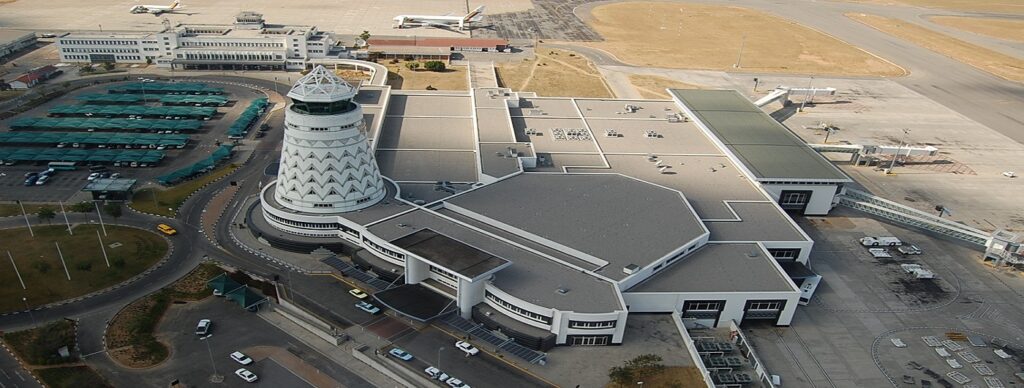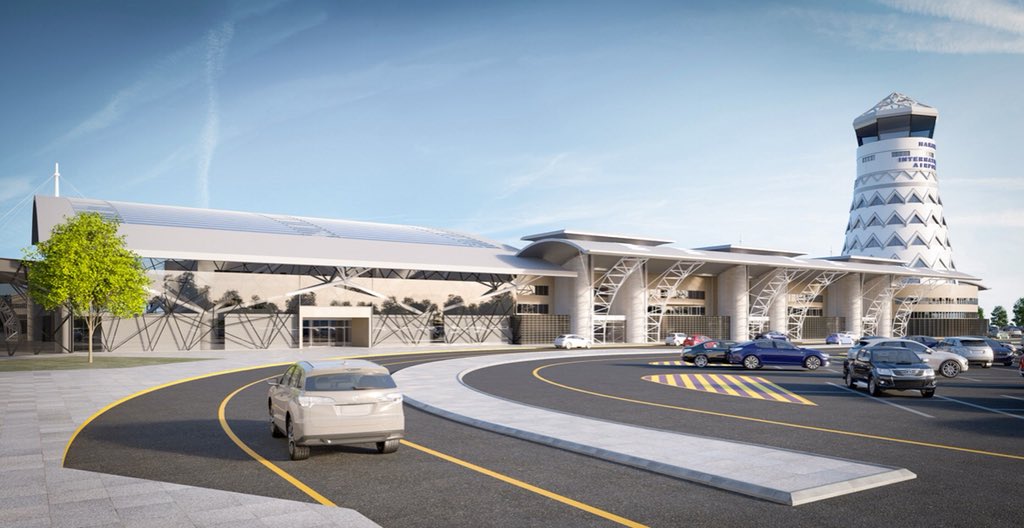By Correspondent

Robert Gabriel Mugabe International Airport formerly known as Harare International Airport was established in 1956 then known as Salisbury Airport.
The RGIA was commissioned in 1956 and officially opened on the 5th of February 1957 under the name Salisbury Airport.
It is located 15 kilometres south of Harare city, the capital of Zimbabwe.
The airport is the main gateway into Zimbabwe and is a natural gateway into Southern Africa.
Council describes the capital, which hosts RGM Airport, as a beautiful, light-filled, open city; high on the country’s central plateau.

An artist’s impression of the post-expansion state of the RGM.
“It is a city of modern buildings, Jacaranda lined wide thoroughfares, beautiful parks, gardens and a multiplicity of scenic sites.
Places of interest on the peripheries include Domboramwari, Balancing Rocks in Epworth, National Heroes Acre and National Gallery of Zimbabwe.
It also cites the Zimbabwe Museum of Human Sciences, Mukuvisi Woodlands, Domboshava Caves, Lion and Cheetah park among other attractions.
RGM Airport is the largest airport in Zimbabwe.
It boasts of a 4725 meters long and 46 meters wide runway, capable of handling wide bodied aircraft such as the Boeing 777/B747 or equivalent.
After its expansion programe the International Airport doubled its annual passenger capacity to six million.
Airport Technology
The domestic passenger terminal can handle 500,000 passengers.
Expansion Program
It was expanded with the construction of a new terminal and related facilities to increase its passenger handling capacity.
The terminal building features amenities such as a VVIP pavilion, gyms, salons, coffee bars, and a children’s play area.
The expansion project also included the installation of airfield ground lighting, communication infrastructure and a baggage handling system.
Also added were a docking system and scanners a secondary radar system, alongside the construction of a new remote fire station and tarmacs.
In addition, a range of service vehicles were added to the airport.
They include ambulances, universal towing vehicles, airside buses, and fire-fighting equipment.
The existing air traffic control systems, runways, tarmacs, and car parks were also renovated.
Air conditioning, ventilation, and smoke exhaust control systems were also upgraded.
The expansion project was done by China Jiangsu International (CJI) and funded through a $153m loan provided by the China Export-Import Bank.
It is the second project undertaken by CJI in the country after the Victoria Falls international airport modernisation of 2016.
